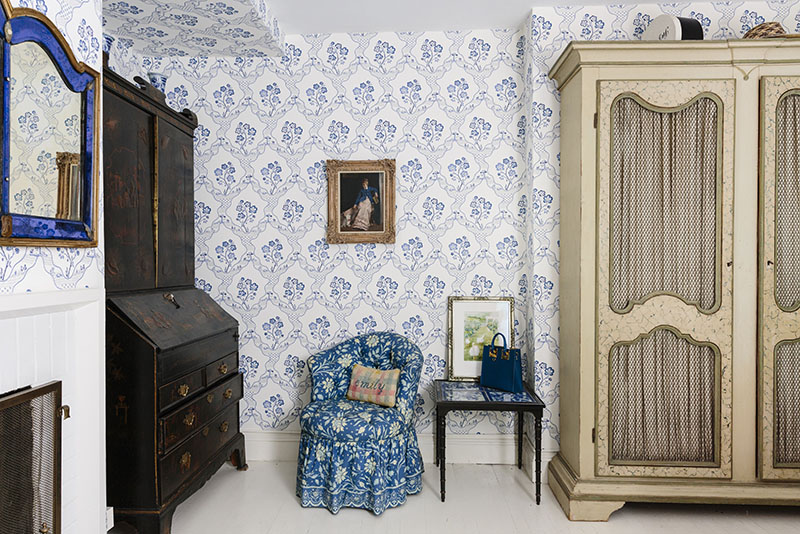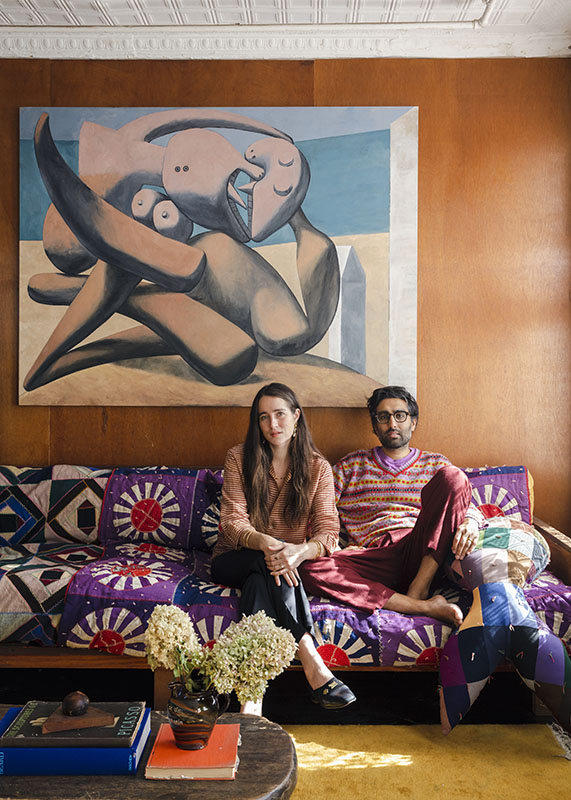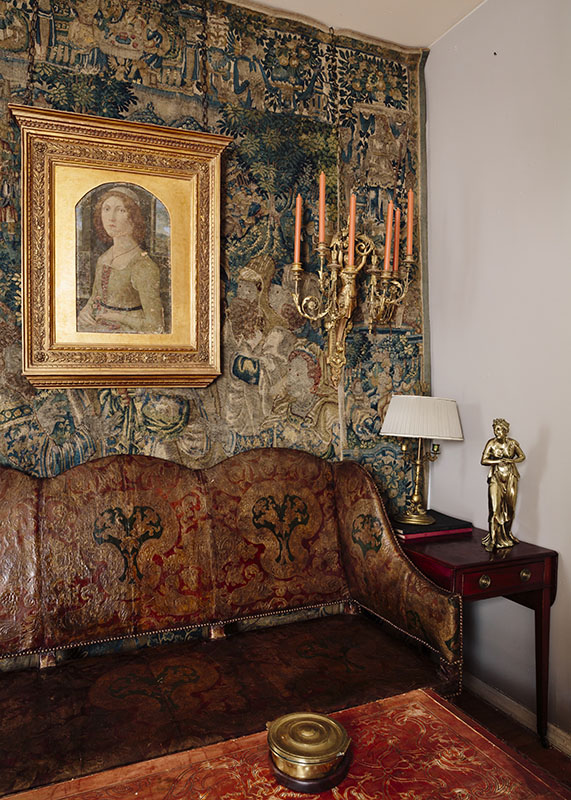𝘛𝘏𝘌 𝘕𝘌𝘞 𝘈𝘕𝘛𝘐𝘘𝘜𝘈𝘙𝘐𝘈𝘕𝘚 Offers Lighthearted Inspiration to All Lovers of Old Things
by Kate Burnett Budzyn
My husband and I are preparing to sell our beloved 1880s Philadelphia rowhouse. As we pack boxes, repair plaster, hire painters, and lament the dream projects we never got to, we try to imagine the rare-bird buyer who might be interested in our old home and its unabashed embrace of the past. “Is there anyone else out there who will want a kitchen with a 1950s fridge and stove?” we wonder. “Is it worth leaving our massive Eastlake cabinet, or should we arrange to move it?”
Michael Diaz-Griffith’s The New Antiquarians provided exactly the answers we needed when we found a couple of spare hours to peruse it one recent morning. The book, published by Monacelli earlier this year, profiles the homes of 17 young-ish collectors of old things. Their fresh arrangements of temporally disparate objects—ranging from 17th-century Aubusson tapestries to 1980s chintz sofas—offer proof that vintage and antique décor still has a wide world of devotees.
This is a coffee table book in the form’s full glory: the images are a more-than-ample serving of inspiration. But good writing also underlies the book’s beautiful pictures. Diaz-Griffith, who is credited as author and curator, supplements the feast of interior photographs by Brian W. Ferry with carefully observed written portraits of the assembled inhabitant-collectors.
At the start of each profile is a list of objects that typifies the collector’s space. A chapter on the Chinatown loft of designers Emily Bode Aujla and Aaron Singh Aujla, for example, is heralded by this recitation of materials: “Handmade dollhouse furniture, American quilts and linsey-woolsey coverlets, Alsace pottery, Bengali literature, senior corduroys, and vintage Chanel.” What follows is a set of images and a short essay documenting the couple’s wood-paneled and saffron-painted home, which the author describes perfectly as “a complex, Cape Cod-meets-Chandigarh cosmos swirling above Lower Manhattan.” Under Diaz-Griffith’s treatment, people’s considered hoards become material poems.
Unlike many interior design publications, the book doesn’t catalogue or list sources for the objects and materials that make up these spaces, and it doesn’t amount to a who’s-who of designers or suppliers. What is lost in material detail is gained in the sense that these interiors are, refreshingly, inspiration, not advertisements. Old things are survivors of time—while they can be bought and sold, they can’t be replicated. Collecting and artfully arranging them becomes a statement of self that would be impossible to achieve with new mass-produced objects.
Italian giltwood sconces and a 16th-century Flemish tapestry in the apartment of dealer Collier Calandruccio in Brooklyn’s Crown Heights neighborhood. Photo by Brian W. Ferry.
The New Antiquarians offers cheer to any antiquarian who has wrung their hands with worry that connoisseurship is a dying art, or that developers are renovating away all historic interiors, or that collecting artifacts has no relevance in fraught times. You are not alone, this book assures us; there are others out there who also live amongst strange old things.
Kate Burnett Budzyn is a contributing writer for The Decorative Arts Trust Bulletin. She researches historic clothing and textiles and is the book review editor at Winterthur Portfolio.
About The Decorative Arts Trust Bulletin
Formerly known as the "blog,” the Bulletin features new research and scholarship, travelogues, book reviews, and museum and gallery exhibitions. The Bulletin complements The Magazine of the Decorative Arts Trust, our biannual members publication.
Click Images to Enlarge
Did you know that clicking on the images in Bulletin posts will allow you to get a closer look? Simply click on an image, and a larger version will open in a pop-up window.











